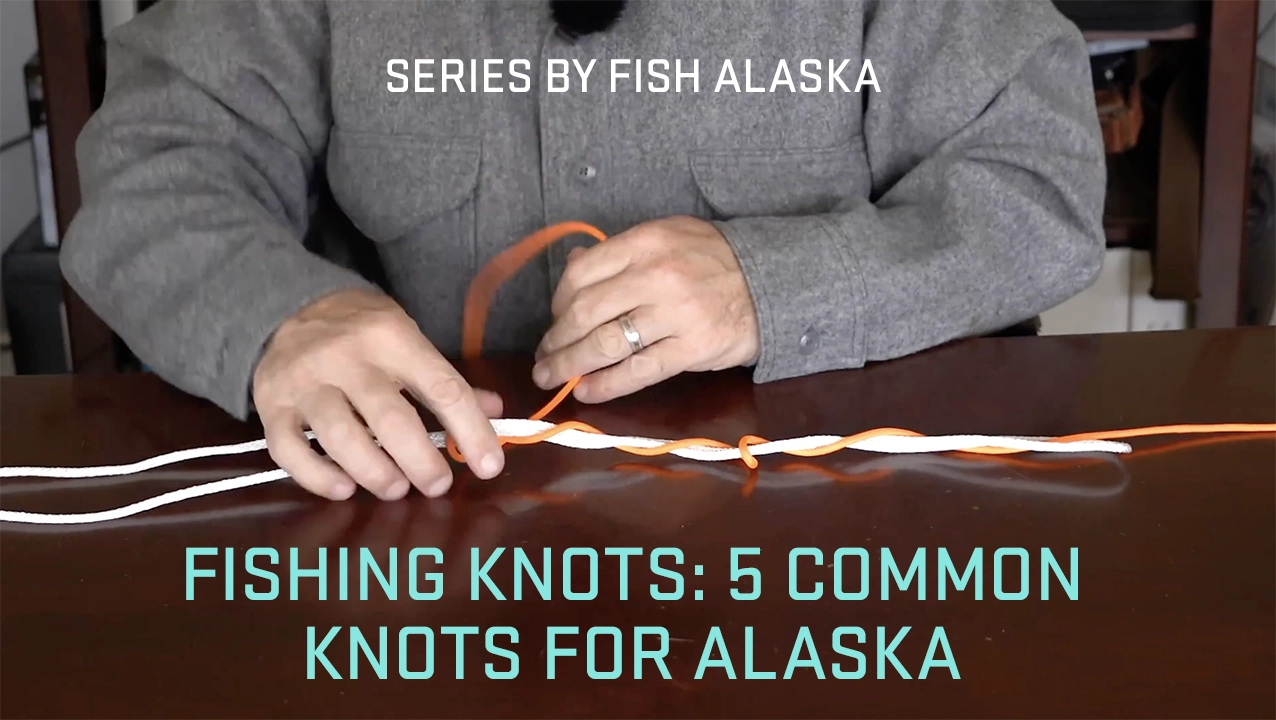Fishing Knots
Fishing knots are an essential part of an angler’s knowledge set. Many of us remember the first fishing knot we were taught. It might have been an improved clinch knot or maybe a Uni knot. There are many from which to choose. In this video series, you’ll see five of the fishing knots we often use in our adventures around Alaska. They are the Non-Slip Loop Knot, Trilene Knot, Triple Surgeon’s Knot, Alberto Knot, and Bowline Knot.
The Non-Slip Loop Knot is useful for attaching flies to tippet, and for attaching lures to monofilament or fluorocarbon leaders. It allows the fly or lure the most freedom of movement possible, so you get maximum movement out of the fly, spoon, twitching jig, or other lure. This has proven to elicit more bites than knots which don’t allow such freedom of movement.
The Trilene Knot is one of many fishing knots in which the line makes two trips around the eye of the hook, swivel, or other tackle. This knot is similar to an improved clinch knot, and really no more difficult to tie. Fishing knots that make two trips around the eye are proven to be significantly stronger than knots in which the line only makes one trip around the eye. The Trilene Knot is useful and effective for both braided lines and monofilament/fluorocarbon.
The Triple Surgeon’s Knot is used to join two pieces of non-braided line together. It can join two pieces of monofilament, two pieces of fluorocarbon, or a piece of monofilament and a piece of fluorocarbon. One of the great things about this fishing knot is that it can join pieces of line that are of different diameters. For instance, you could join a piece of 10-pound-test fluorocarbon to a piece of 20-pound-test monofilament. We commonly use this fishing knot to join a tippet section to a leader (tapered, or not) while flyfishing.
The Alberto Knot is used to join braided mainline to a fluorocarbon or monofilament topshot or leader. There are many situations in which the Alberto Knot works well, such as attaching a monofilament or fluorocarbon topshot to line to be used while fishing with downriggers. Another application is to attach a leader to braided mainline, such a 4-foot leader you might use for twitching jigs for salmon. The Alberto Knot is relatively easy to tie and has proven to be reliable.
The Bowline Knot isn’t often used to attach hooks or lures, but it is an important fishing knot from a safety perspective because it is the best knot for attaching anchor line to an anchor or anchor chain. One of the beautiful aspects of this knot is that even after being used and being subjected to hundreds of pounds of pressure, it can easily be untied.
There are many, many fishing knots that have application in Alaska. These are just five with which we have enjoyed considerable success.


